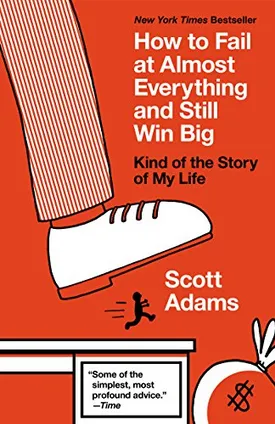How to Fail at Almost Everything and Still Win Big by Scott Adams
When Scott Adams released his book “How to Fail at Almost Everything and Still Win Big: Kind of the Story of My Life”, he opened the door to a new way of thinking about failure and success. Adams, who is known for his popular comic strip and television show Dilbert, believes that there are steps one can take to fail almost everything in their life but still win big in the end. This summary aims to provide an overview of Adams’ book and its approach to goal setting, combining interesting examples and stories with practical advice.
First and foremost, Adams explains the concept of ‘systems’ versus ‘goals’. Goals are a roadmap with a single destination, meaning that you either succeed at them or fail entirely. On the other hand, systems are process-oriented and the results they produce can be more varied. Adams emphasizes that it is better to focus on systems instead of goals, as they tend to be more helpful and give you something to fall back on if things don’t work out.
The book further delves into how one’s environment and attitude can heavily contribute to success and failure. Adams explains how the actions of others can often shape our own behavior, usually ending with positive results. He also stresses the importance of having a growth mindset and avoiding the trap of thinking you are “too old” or “not good enough” for something. Instead, Adams recommends believing in yourself and valuing learning over everything else.
One important concept introduced by Adams is the “Two-Hour Rule”. Adams suggests dedicating two hours per day to pursuing a personal project that you are passionate about; this should be unconnected to work or any other obligation. For example, Adams dedicates two hours per day to practice his cartooning or writing. He argues that this practice will not only help you to improve in your chosen field, but also be beneficial for your future career or other ambitions.
Adams' book also offers specific tips and advice on how best to prepare yourself for success. He recommends having an open mind when it comes to career paths and opportunities, even if they are unexpected. Additionally, Adams encourages readers to be flexible in the way they create their career goals, and to think outside the box and develop creative solutions when executing their goals. He also believes in the power of small trades to help ensure that the chosen path is one you are most interested in.
The conclusion of the book finds Adams walking readers through the importance of perseverance and the ability to fail without fear. He believes that it is essential to accept failure as part of the process, allowing it to shape us and make us more equipped to succeed in the future. Adams further emphasizes how learning how to adapt is key to building resilience which, in turn, is essential in order to achieve success.
Overall, Scott Adams’ “How to Fail at Almost Everything and Still Win Big: Kind of the Story of My Life” is an incredibly insightful book. It combines funny stories and interesting examples with practical advice, offering a different approach to success that is equal parts encouraging and thought-provoking. Readers of Adams’ book will benefit from his unique perspective and may even be inspired to push for greatness in the wake of failure.

